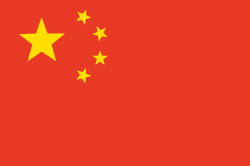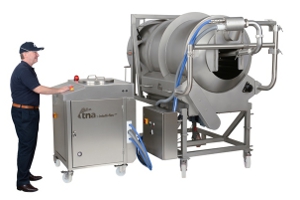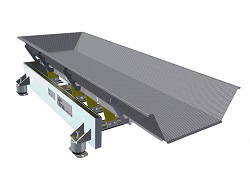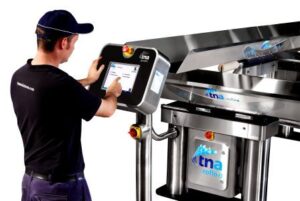the timeless appeal of potatoes — and why innovation matters more than ever
trends | 5 mins read
May 25, 2025
By Twan van den Berg, Group Solution Specialist Manager – Processing, TNA Solutions
Few food items enjoy the popularity or widespread importance of the potato. It’s long been a cornerstone of global cuisine, celebrated for its versatility, accessibility, and nutritional value. Its cultural and dietary significance is so striking that the Food and Agriculture Organization of the United Nations (FAO) has even designated May 30th as “International Day of the Potato”, with this year taking the theme of “Shaping history, feeding the future.”
With the day upon us, it’s worth reflecting on why this humble crop has remained a constant in our diets, and why continued innovation in potato processing is more important than ever.
Recent figures paint a vivid picture of the potato’s ongoing global significance. In 2024, worldwide potato consumption was estimated at around 380 million tonnes, and it’s expected to rise steadily to 398 million tonnes by 2035. This growth underlines the vital role that potatoes play in feeding a growing population. Meanwhile, in France — a country with a deep culinary connection to the potato — the frozen potato product market has seen a 25% rise since 2019, particularly among younger, convenience-driven consumers.
With its popularity, it would be easy to think the potato needs no help staying relevant. Times, however, are changing. Health-conscious consumers are seeking snacks with lower fat and acrylamide levels, sustainability is becoming a competitive differentiator, and operational pressures from rising costs and labour shortages are forcing food manufacturers to rethink traditional processes.
Keeping a classic fresh
Meeting these challenges calls for smart solutions — and that’s where innovation steps in. Technologies like hydro-cutting systems have transformed raw potato preparation. Hydro-cutting uses a high-pressure water stream to propel potatoes through an alignment tube prior to being cut into strips by the knife block, ensuring that each potato is oriented correctly for maximum cut length. This precision cutting method contrasts sharply with mechanical systems, where variations in potato positioning can lead to irregular shapes, shorter cuts, and greater waste.
The benefits extend well beyond appearance. By creating smooth, uniform surfaces, hydro-cutting systems help reduce the amount of oil that gets absorbed during frying. Traditional mechanical cutting often leaves serrated edges, which increase the surface area and promote higher oil uptake. Lower oil absorption not only helps manufacturers respond to consumer demand for healthier snacks but also leads to notable cost savings over time by reducing oil consumption across production cycles.
Hydro-cutting is far from the only way that oil is managed in the potato processing industry. During frying, oil quality plays a decisive role in determining the final product’s taste, texture, colour, and shelf life. Effective oil management is integral to improving product consistency, reducing the risk of spoilage and boosting overall production efficiency.
The way that oil is managed and monitored depends largely on the type of oil being used. High stability oils, such as palm oil, enhance product shelf life and taste, while also being rich in monounsaturated fatty acids and generally more resistant to oxidation. However, palm oil typically crystallises and solidifies at temperatures below 20ºC (68ºF), requiring measures such as heat tracing to be taken in the processing line to prevent clogging of piping, tubing and ancillary components after production stops.
Less stable oils like sunflower oil may be a cheaper alternative than high stability oils, but come with the trade-off of being more vulnerable to oxidation. These less stable oils degrade quickly under high temperatures, accelerating oil breakdown, shortening frying lifespans and negatively impacting product shelf life and quality.
Irrespective of the type used, oil can degrade rapidly without effective filtration and management, affecting not only product quality but also food safety and regulatory compliance. Continuous oil filtration systems, like those integrated into TNA’s frying solutions, remove crumbs and particulates in real time. This prevents carbon build-up, maintains optimal frying conditions, and significantly extends oil life. By ensuring the oil stays fresher for longer, processors can maintain the ideal balance of taste and crispness in fried products while reducing their overall oil consumption.
Intelligent oil management systems can go further in their analysis, allowing potato processing companies to monitor key parameters such as free fatty acid (FFA) levels, peroxide values, and oil turnover rates. These insights allow manufacturers to take proactive measures, such as topping up or refreshing oil at the right intervals. Not only does this reduce waste and operational costs, but it also helps ensure processors meet stringent quality targets set by food safety authorities around the world.
Feeding future demand
With consumer preferences constantly in flux, flexibility across processing lines is becoming a major differentiator for manufacturers who are aiming to future-proof their operations. Flexible systems allow for quick product changeovers with minimal downtime, enabling manufacturers to diversify their offerings without major infrastructure overhauls.
Complete line solutions, such as those provided by TNA, streamline every stage in the process from e.g. receiving and washing all the way up to distribution and packaging. This end-to-end integration not only simplifies operations but also improves yield, reduces waste, and enhances traceability. With intelligent control systems and modular designs, processors can scale production, introduce new product lines, and optimise resource usage with greater ease.
The story of the potato is a story of adaptability. From ancient South American farms to modern global processing plants, the potato has shaped and fed generations. As we look to the future, it’s clear that innovation will be the driving force ensuring this remarkable crop continues to thrive. By investing in smart technologies today, food manufacturers can honour the potato’s rich legacy while securing its place on tables worldwide for generations to come.

























